Home Again Home Again Jiggetty Jig

Autumn Revolution
FFRR#2
|
Lovarchist Farming Chronicles
A BLOG BY PEGASUS
|
Pain Pals, Sacrificial Sand
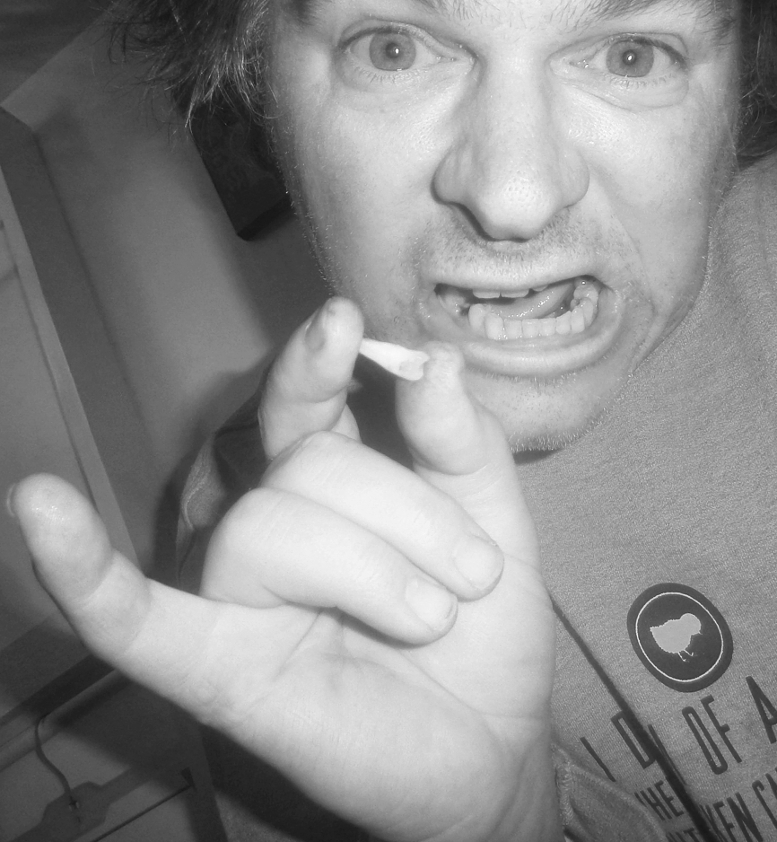
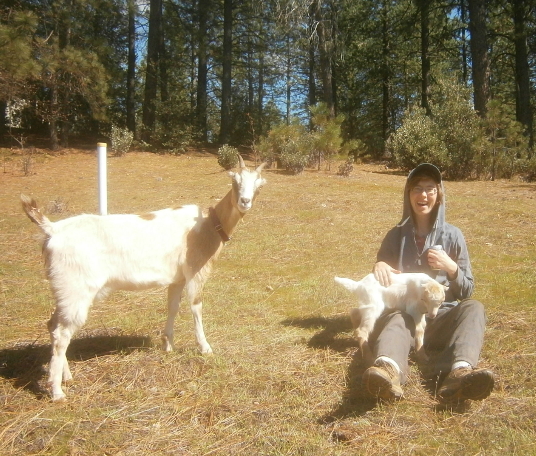
On Ash Wednesday (March 5th this year) Chelsea & I had no time or energy to keep filling in the growing canyons of watercourses through the Farm roads with gravel and sand, we had other plans and visions within reach--other tasks requiring attention. Praying for an end to drone warfare, we started the day with an ecumenical service for justice at the north side of Beale Air Force Base. What a way to start Lent: U2 spy-planes were launched repeatedly (probably landing repeatedly too out of sight as the pilots practiced overhead) while we sang and asked God Almighty to stop this idolatry of human military technology. Elsewhere at the Base the soldiers flew missions to help assassinate whomever the US wishes to kill overseas. So we commemorated the beginning of the 40-days of sacrifice with ashes on our heads, as five people were arrested for crossing the line, and we did the trip with a slight bit of pain (chelsea's spinal injury and my abscessed tooth trouble). Chelsea's suffering and my pain-in-the-mouth have been since diminished (see above picture of my tooth-trophy), through fairly simple technologies, and the sands of the land during this Lenten season are prominent in my mind as i go into my second year of farm management, learning more each year about the soul of soil. Ours is mostly clay and rock, so here in Calaveras County, gardening a previously un-managed spot of land is a sometimes a matter of mining for rocks as much as grabbing dirt for garden beds. We harvest rocks and usable soil near the solar power collectors, and put it in new beds when building new beds away from the meadow. We have three garden spots, and only the meadow has usable soil to begin with. But our first priority in farming here is ALWAYS to build the soil, as a way to dance with nature in ways that benefit humans without devastating either dirt or other elements in this region. Fecundity is fun, and sometimes hard work, and usually both, because there's still so much to learn about the microbes in the ground and the inter-species relationships 'round here.
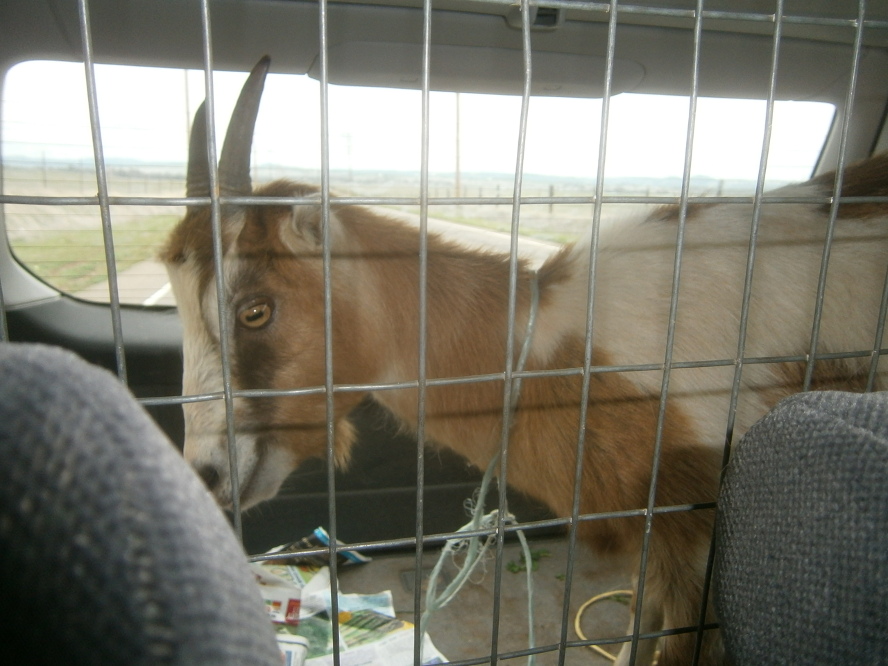 . .

To take on a new task for peace at the Farm, we stopped on the South side of Beale to get a goat who might let us drink her milk. Her udders got pretty big a few days before the birth--ushering in two days of scattered showers in liquid and solid form. (See the next two paragraphs for info on how we get to share her milk.) We picked her up a mile away from Beale Air Force Base, and we had space in the car for her, so...at last, the doe has arrived--she is named Good-Onya. At first she was just a shy goat who likes to climb on the woodpile. We quickly prepared for her a stable birthing arena, since she was an impulse-buy on AshWednesday. She, and other Lamancha goats are born with those tiny little earlobes. They're famous for good milk and "twist-off" ears.
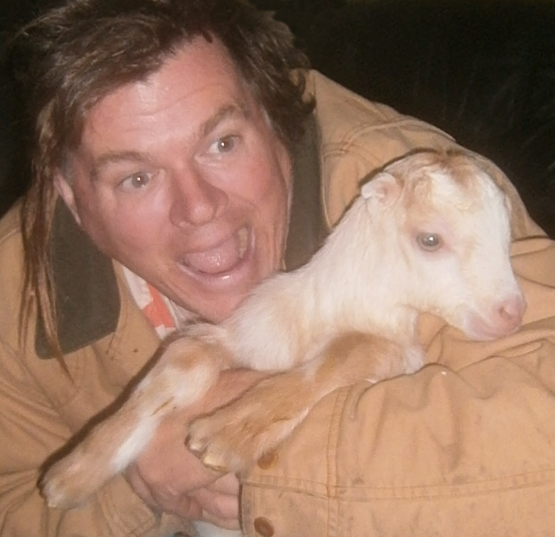


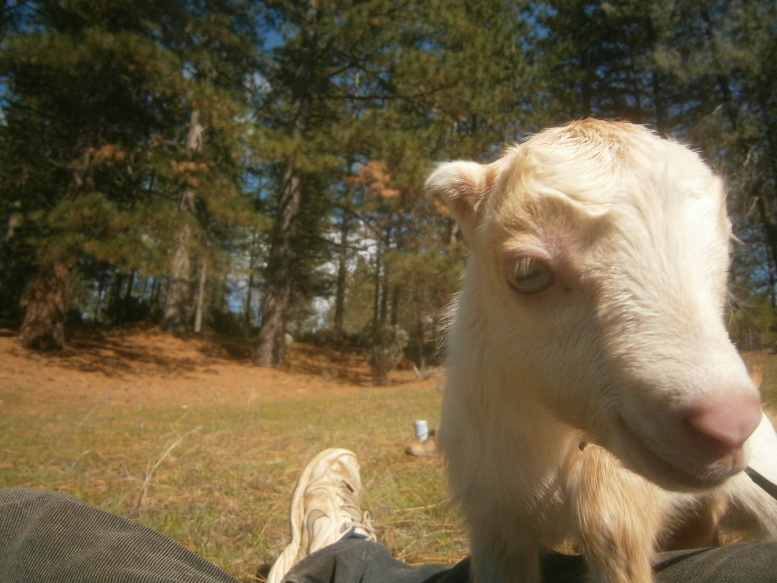
The day before Tom's cat's 20th birth anniversary (that cat's name is Thumper), the goat mother (Onya) gave birth to a male kid (Snow), which was March 31st. We were ready to have all four of us help out and/or witness the birth. Chelsea rang the bell frenetically (not the ordinary, steady ring indicating meal or prayer time) so the three dudes jumped in the truck and raced up the hill to Catherine's House. We had been occupied harvesting soil (including a tiny dose of sand in our mostly clay soil), and sacrificed the job in order to help make sure the kid came out o-k, which, as you can see above, he did. The first hour included the four of us trying to get clean-ish milk from the udders into our allegedly sterile containers and then into junior's mouth. He liked it body-temperature (of course) the first two days, but by the third day he's o-k with our interloping in the natural process of mom-to-kid milking. That first day the colostrum made the milk more yellowish, and we developed a routine of heating to 100 degrees, and pan-feeding the little kid, but the routine's easier these days since Snow doesn't reject the milk when it's room temperature (even on these cold days of snow, ice, rain and scattered sunshine). Mother Nature makes it easy, and human technology makes it different, and necessarily more complex, because we people want to make butter, cheese, ice-cream, and simply have a drink of goat milk LATER than when it must come out of the udders. The mom just wants the udders emptied regularly, and the kids are hungry/thirsty--a match made on a heavenly earth. But the wisdom of veganism includes the niceness of NOT interfering so seriously in the birth-life-reproduction-death-etc. cycle of those other animals. The wisdom of farming is to "manage relationships among various species to facilitate surplus and greater overall pleasure" for at least some of the species involved. The wisdom of wildness includes simplicity, more roughness, and randomized amounts of suffering and death when compared to compassionate management of resources.
So, in order to avoid the heartbreak of hearing the kid crying for his mom in the inevitable separation anxiety a week after milking/suckling at their leisure, we made sure the kid is imprinting his sense of who-the-herd-is with us humans. That means nearly constant companionship with him and our three-times-daily milking of his mom, and the need for refrigeration in case the kid's not hungry when the milk is fresh. About 48 hours after birth, Good Onya was producing enough milk that the kid was satisfied each time he pan-drank his meals/snacks, and we had 200 milliliters extra for human consumption. She's probably producing enough for two kids, since twins are more common in goats than humans. We now know why other folks (including our Farm's founders) would deal with the sadness of separating the kid LATER (a week, rather than immediately) from the mother--at least one reason is that it's infinitely easier to let them deal with each other as mom & offspring than to keep this schedule of milking/feeding/walking/holding/etc. with the two in a way that's different than a month from now when the kid's old enough to eat solids and act like an adult, basically, as far as farming adult animals seems to go. After a few days we began finding ways to get the mom & kid to spend time together, but it's a tough balance, for us to get milk (avoiding the potential of natural nursing via kid-on-teat) and for the offspring and parent to spend time together, it's always supervised by us humans. When we leave them unsupervised, they sometimes call to each other, bleating back and forth through the walls of the stalls and goat-yards of separation. They are pain pals for the time being, as Chels & I were when her back ailed her and my tooth distracted me. All this for the sake of producing what we consume, and sharing what we produce with others: a way for our people to start producing more than consuming. We currently can afford to give the small amounts of leftover milk away to a friend or two one day a month or so, but for the masses who buy milk out there in the consumer society, it's a different kinda game.
I think milk should be a whole lot more expensive than it is, now feeling the labor/time/energy needed to manage milk-sharing between goats and humans. But who am i to say how the "market" should be run? We'll continue to buy good feed (non-GMO) for the goats and hope to be able to produce all nutrients needed on these 80 acres within a few years. We got plenty of manzanita (they love to eat that!) so grazing's a no-brainer for a small herd of up to 10 goats, if we have enough caprine-lovers 'round these parts.
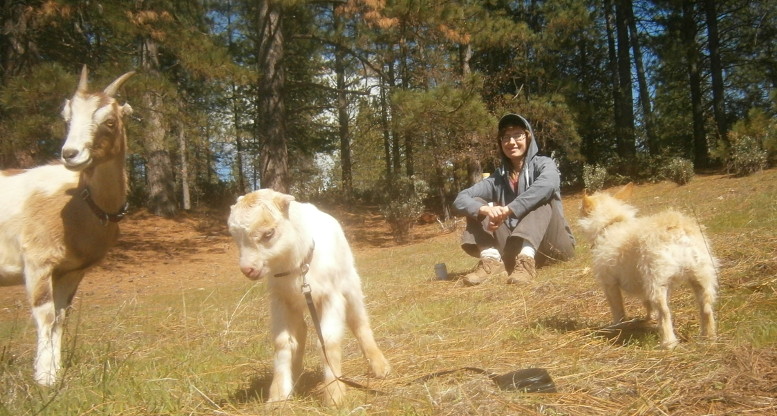
|

